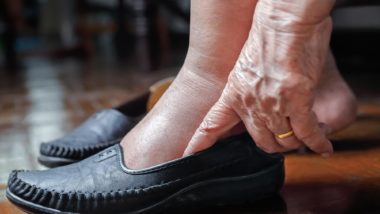Top Class Actions’s website and social media posts use affiliate links. If you make a purchase using such links, we may receive a commission, but it will not result in any additional charges to you. Please review our Affiliate Link Disclosure for more information.

What Is Fournier’s Gangrene?
Fournier’s gangrene, also known as necrotizing fasciitis of the perineum and genitalia, is a flesh eating infection that typically affects men’s scrotum, penis and perineum. Although the condition can affect women and children, it is extremely rare.
Symptoms of Fournier’s gangrene include fever, general discomfort, genital pain and swelling, rankness and foul smell of the affected tissue, gangrene.
The infection is caused when flesh eating bacteria enter the body through small cuts in the genital area. Fournier’s gangrene may be secondary to another infection associated with local trauma, operative procedures, and urinary tract diseases.
The condition will begin with mild symptoms of infection but can quickly progress to full-blown gangrene that can spread to parts of the thighs, up the abdominal wall, and into the chest wall. Prompt medical attention is required to manage the condition and prevent life-threatening complications.
Fournier’s gangrene is commonly treated with broad-spectrum antibiotics and, if necessary, surgical debridement. This involves the removal of the dead skin, a process that may need to be repeated as the infection progresses. If the condition is severe, significant amounts of tissue – even the entire genitalia – may have to be removed to stop the spread of the infection.
Long term recovery from the flesh eating infection could include the need for reconstructive surgery if the patient’s tissue is severely affected and destroyed. Medical News Today notes that Fournier’s gangrene could cause a “cascade” of increasingly deadly complications.
If the infection is severe, it may spread to deeper tissues, leading to an inflammation of the blood vessel linings and restricted blood flow. The blood could also be affected in the form of blood clots if tissues lose their supply of blood and start to die off.
Finally, if tissue death releases bacteria and other byproducts into the bloodstream this can lead to sepsis, a dangerous blood infection. When septic shock sets in, the body is unable to maintain its blood pressure and vital organs can shut down. This quickly results in death.
According to an article published in Urologia Internationalis, between 20 and 40 percent of people with Fournier’s gangrene will succumb to the complications of the disease. Some other studies reportedly estimate that the mortality rate is much higher. Due to the deadly nature of the infection, prompt medical attention is key in controlling the spread and preventing life threatening complications.
How Common Is Fournier’s Gangrene?
This flesh eating infection is extremely rare. Since 1950, there have been only 1,800 cases reported in English language medical literature.
Until recently, most victims were males between the ages of 50 and 79 who were diabetics with a history of alcohol abuse and suffering from malnourishment; fewer than 40 women had contracted the disease. An analysis of health records taken between 1984 and 2019 showed only 19 cases of the disease among diabetics who were treated with metformin, glitazone drugs or GLP-1 receptor agonists (such as exenatide). However, since SGLT2 inhibitors were introduced in 2013, there have been 55 cases reported – a significant number of whom were women.
Other risk factors for Fournier’s gangrene include the inability to access sanitation facilities and medical services, and a compromised immune system due to chemotherapy or the use of steroids.
 What Diabetes Medication Causes Fournier’s Gangrene?
What Diabetes Medication Causes Fournier’s Gangrene?
In August 2018, the U.S. Food and Drug Administration (FDA) released a safety announcement to inform the public that sodium-glucose cotransporter-2 (SGLT2) inhibitors had been linked to Fournier’s gangrene. SGLT2 represents a class of FDA-approved prescription drugs designed for use with diet and exercise to lower blood sugar in adults with type-2 diabetes.
SGLT-2 inhibitors approved by the FDA include:
- Invokana (canagliflozin)
- Invokamet (canagliflozin and metformin)
- Invokamet XR (canagliflozin and metformin extended-release)
- Farxiga (dapagliflozin)
- Xigduo XR (dapagliflozin and metformin extended-release)
- Qtern (dapagliflozin and saxagliptin)
- Jardiance (empagliflozin)
- Glyxambi (empagliflozin and linagliptin)
- Synjardy (empagliflozin and metformin)
- Synjardy XR (empagliflozin and metformin extended-release)
- Steglatro (ertugliflozin)
- Segluromet (ertugliflozin and metformin)
- Steglujan (ertugliflozin and sitagliptin)
SGLT2 inhibitors remove sugar from the blood stream by using the kidneys to excrete the excess in urine. This increased sugar content in the urine may make the genitals favorable for bacteria, including the bacteria that causes Fournier’s gangrene.
The first SGLT2 inhibitor was approved by the FDA in March 2013. Since then, there have been 12 cases of Fournier’s gangrene in SGLT2 inhibitor patients. Although it’s a small number, the FDA notes that this is a significant occurrence due to the rarity of the disease.
“Fournier’s gangrene developed within several months of the patients starting an SGLT2 inhibitor and the drug was stopped in most cases,” according to the FDA. “All 12 patients were hospitalized and required surgery. Some patients required multiple disfiguring surgeries, some developed complications, and one patient died.”
The FDA report notes that the 12 cases represent only those reports submitted to the agency and found in the medical literature, so there may be additional cases the FDA isn’t aware of. By comparison, between 1984 and 2018, just six cases of Fournier’s gangrene were reported to the FDA, and all six patients were males. Five of those patients required hospitalization and the sixth died.
“This contrasts with the findings for Fournier’s gangrene with the SGLT2 inhibitors where more cases were reported over a shorter timeframe, and cases involved both males and females,” the FDA states.
A lawsuit has already been filed against Janssen Pharmaceuticals and Johnson & Johnson, arguing that the drug makers failed to warn the patient of the increased risk of Fournier’s gangrene if taking the diabetes drug Invokana.
The FDA recommends that SGLT2 inhibitor patients monitor for Fournier’s gangrene symptoms and seek prompt medical attention if they experience genital tenderness, fever or other symptoms of infection.
How Is Fournier’s Gangrene Diagnosed?
The preliminary diagnosis can be done in almost any clinic, but lab tests and imaging (such as an MRI or x-ray) is usually necessary in order to confirm the diagnosis. This can indicate the presence of gas beneath the skin surface. Computed tomography (a CT scan) can be employed for determining the origin of the condition and how much tissue is affected. Blood work may also be used to test for infection and to see how the blood is clotting in response.
Because of the rare nature of Fournier’s gangrene, diagnostic tests may focus on ruling out other, more likely conditions. For example, epididymitis – an inflammation of part of the male reproductive system – and orchitis – inflammation of the testicles – both have similar symptoms and would be ruled out before a doctor considered a rare flesh eating infection.
Are There Treatments for Fournier’s Gangrene?
Fournier’s Gangrene is considered a condition requiring immediate, emergency treatment. The first line of treatment is to administer broad-spectrum antibiotics, followed by surgical removal of the necrotized tissue (known as debridement). Because the bacteria that causes the condition is anaerobic (unable to survive in an oxygen-rich environment), hyperbaric oxygen therapy may also be effective.
Join a Free Diabetes Medications & Flesh-Eating Infection Lawsuit Investigation
The type-2 diabetes medications linked to the flesh-eating infection include:
- Invokana
- Invokamet/Invokamet XR
- Farxiga
- Xigduo XR
- Qtern
- Jardiance
- Glyxambi
- Synjardy/Synjardy XR
- Steglato
- Segluromet
- Steglujan
If you or a loved one took one of the type-2 diabetes medications listed above and suffered from a flesh-eating genital infection, you may qualify to join this diabetes medication lawsuit investigation. Fill out the FREE form on this page for more information.
ATTORNEY ADVERTISING
Top Class Actions is a Proud Member of the American Bar Association
LEGAL INFORMATION IS NOT LEGAL ADVICE
Top Class Actions Legal Statement
©2008 – 2024 Top Class Actions® LLC
Various Trademarks held by their respective owners
This website is not intended for viewing or usage by European Union citizens.
Get Help – It’s Free
Join a Free Diabetes Medications & Flesh-Eating Infection Lawsuit Investigation
If you qualify, an attorney will contact you to discuss the details of your potential case at no charge to you.
PLEASE NOTE: If you want to participate in this investigation, it is imperative that you reply to the law firm if they call or email you. Failing to do so may result in you not getting signed up as a client or getting you dropped as a client.
E-mail any problems with this form to:
Questions@TopClassActions.com.
Oops! We could not locate your form.

 What Diabetes Medication Causes Fournier’s Gangrene?
What Diabetes Medication Causes Fournier’s Gangrene?










